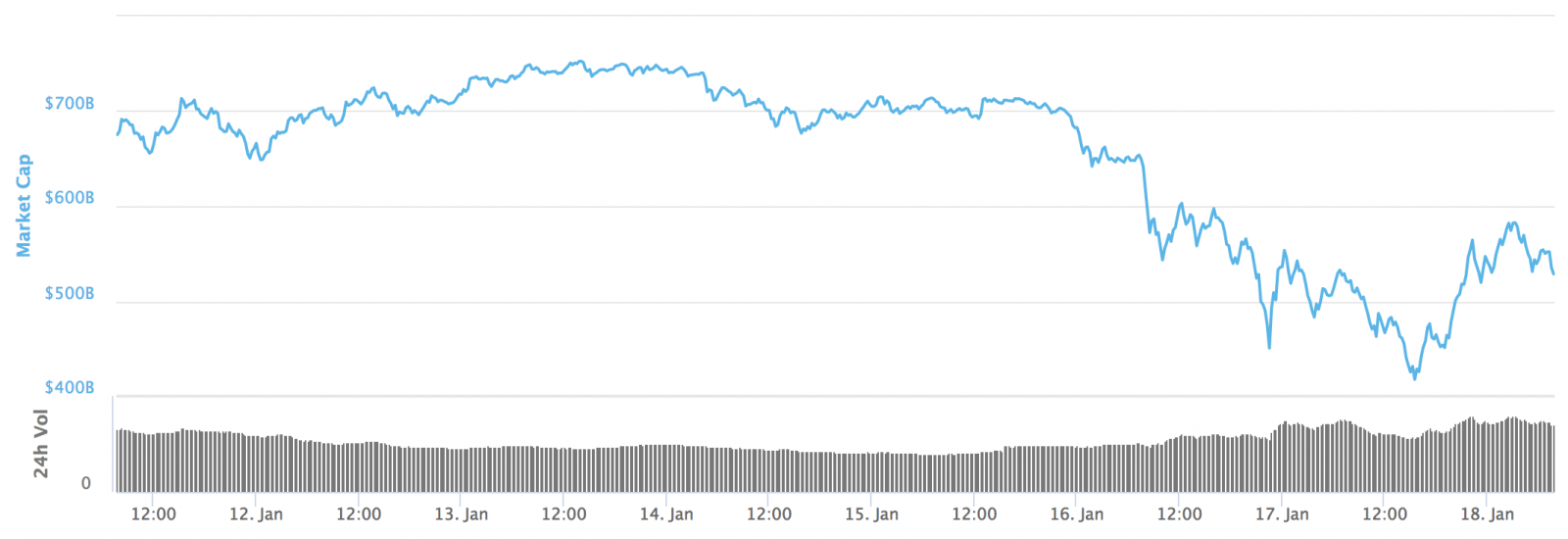Technology
Crypto-Currencies: How The Mighty Have Fallen

At a time when the outlook seems bleak for the crypto-currency market, blockchain aficionados share their views with this publication.
Could this be the beginning of the end for crypto-currencies? Is
the bubble about to burst?
Hundreds of billions of dollars have drained from the
crypto-currency market as fears of an escalated regulatory
crackdown in China sparked a mass sell-off.
A back-of-the-envelope calculation using data from
CoinMarketCap shows that the top-ten crypto-currencies
have had around $313 billion shaved off their market
capitalisation since 7/1/18, with bitcoin taking the biggest hit
as its market value plummeted $119 billion. In total, there are
1,442 digital currencies in circulation with a market cap of
around $465 billion. (By the time of publication, however, these
figures will likely be outdated due to fierce market
turbulence.)
The plunging prices of crypto-currencies across the board began
earlier this week after reports emerged suggesting that
China would clamp down further on its crypto-currency trade,
banning access to offshore digital currency exchanges just months
after the nation forced domestic equivalents to shut shop. The
Chinese government’s plan has sparked hysteria in the global
market, spurring jittery investors to cash out before losses
become unbearable.
Because most online exchanges for so-called “alt coins” –
crypto-currencies that are less well-known than the likes of
bitcoin with a miniscule market cap in comparison – do not allow
users to purchase them using fiat currency, this means any
profits booked are effectively stored in another form of
crypto-currency, like bitcoin or ethereum, for example, until
they are converted back into fiat.
As a result, when the large crypto-currencies crash, any profits
that have not yet been converted back into fiat currency begin to
dwindle. This often prompts a selling frenzy that inevitably
drags the entire crypto market down.
This appears to be the case, according to Dan Novaes, founder of
Current, a blockchain-based platform
that aims to tokenise the music streaming industry.
“There are a lot of investors panic selling right now… this stuff
is volatile,” he said. “This is a product of inexperienced buyers
coming into the market over the past few months and seeing
nothing but gains. When things dip on news such as crackdowns, a
dip occurs that turns into even bigger dip because many are panic
selling.”

Source: CoinMarketCap.com
In December, bitcoin’s price reached over $20,000. At the time of
writing (16:00, 17/1/18), it was trading well below $10,000 and
the fall was not yet showing signs of slowing.
Despite losing around a quarter of their values in the past 48
hours, bitcoin, ethereum and ripple were still up 1,000 per cent,
8,500 per cent and 13,500 per cent, respectively, in the past 12
months.
Daniel Duarte Figueiredo, another crypto entrepreneur who
co-founded blockchain savings company Auctus, remains bullish on
bitcoin and expects its price will ultimately recover and could
reach unseen highs this year.
“The price dropped because of news related to China escalating
[its] crackdown on crypto-currencies and the correction is
normal,” he said. “Unless there is some really negative news
about the blockchain technology [which underpins crypto-currency
transactions], I believe that bitcoin will recover to its highest
values and might even break some new records later this
year.”
He also explained how bitcoin “is still the entrance to other
crypto-currency investments, as in a lot of countries bitcoin is
the only crypto-currency you can buy directly with local fiat
currencies”.
Generally speaking crypto-currencies “still have a lot to grow in
2018,” he added, although “maybe not as much as they did in 2017
in relative terms”.
Bitcoin’s value soared as much as 2,000 per cent over the course
of 2017, while the market cap of all crypto-currencies had
swelled from just $18 billion last January to exceed $750 billion
at its peak. It is unsurprising that the latest collapse has
given so many new investors cold feet.
Déjà vu
Yet, with bitcoin, we have been here before.
First came an unexpected, unexplained 1,000 per cent explosion.
Then, this was followed by a 50 per cent pullback just weeks
later.
This didn’t happen recently, but at the end of 2013 and the
beginning of 2014.
Of course, much has changed since; bitcoin now frequents the
headlines of mainstream news outlets and has transformed from a
niche thought to be used only by techies and surfers of the
so-called Dark Web to a day trader’s play thing after landing on
large exchanges used daily by Wall Street in the form of futures
contracts.
Still, the same lessons need to be learned: crypto-currencies are
a risky bet, and first-time investors looking to make a quick
buck would be wise to sleep on it before jumping in
feet-first.
The volatility of the crypto market, showcased so perfectly this
week, is a stark reminder of why regulators globally are keeping
a hawk’s eye on the sector, and helps explain why authorities in
the East, like in China and South Korea, are taking a tougher
stance.
Many may agree with the words of Pan Gongsheng, vice governor of
the People’s Bank of China, who this week said: “Pseudo-financial
innovations that have no relationship with the real economy
should not be supported.”
In the eyes of crypto-currency proponents, they are still the
future of money.
One thing is for certain, though: only time will
tell.